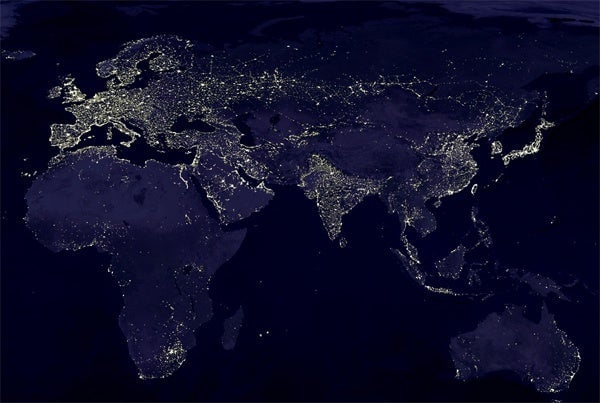It’s not just climate change: cities are also to blame for warmer winter weather
No snow this winter? Blame a city near you.

No snow this winter? Blame a city near you.
Scientists have long wondered why some regions of the world experience warmer winters than predicted by global climate models. The answer, according to new study published in the journal Nature Climate Change, lies in regional variations caused by heat radiating from densely populated urban areas.
Here’s the basic theory: the effects of waste heat from human energy consumption in the world’s biggest cities can be felt as far as a thousand miles away, causing regional fevers and chills of nearly two degrees Fahrenheit. Unlike the related urban heat island effect — the ability of cities to trap and retain heat — waste heat refers to the warmth emanating from houses, cars, lights, and other heat-producing entities concentrated in cities.
Compared to greenhouse gas emissions, changes in land use, and aerosols, the global effect of waste heat is almost negligible, causing an average worldwide increase of .02 degrees. But the heat rising out of cities can affect major atmospheric systems like the jet stream, producing a ripple effect.
In the paper, “Energy consumption and the unexplained winter warming over northern Asia and North America,” researchers from the National Center for Atmospheric Research, Scripps and Florida State University concluded that this phenomenon explains the discrepancy between global climate models and temperature data.
They write that radiant heat from major cities has warmed the winter months in northern Asia, eastern China, the northeast U.S. and southern Canada. It is also responsible for colder winters in Europe, and colder autumns in the U.S. Midwest, Russia and Canada. More than a third of the world’s energy consumption in 2006 — 6.7 out of 16 terawatts — occurred in 86 metro areas in the Northern hemisphere.